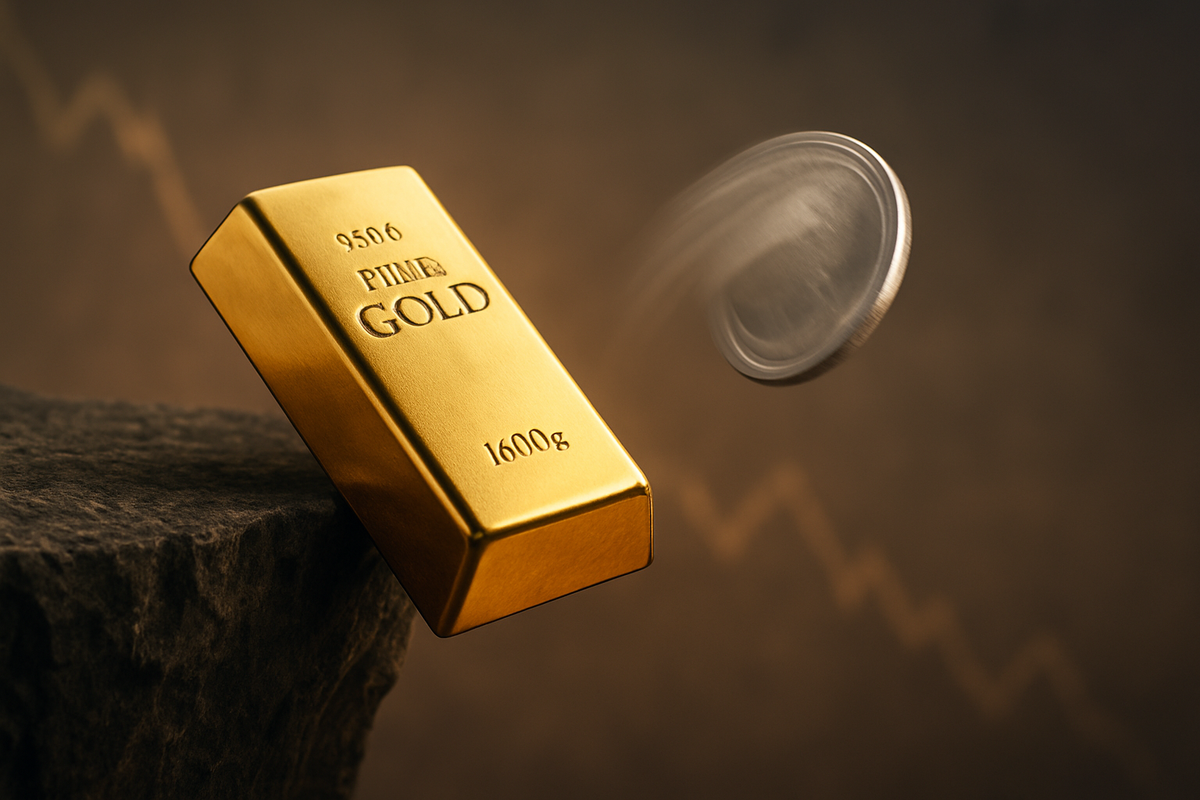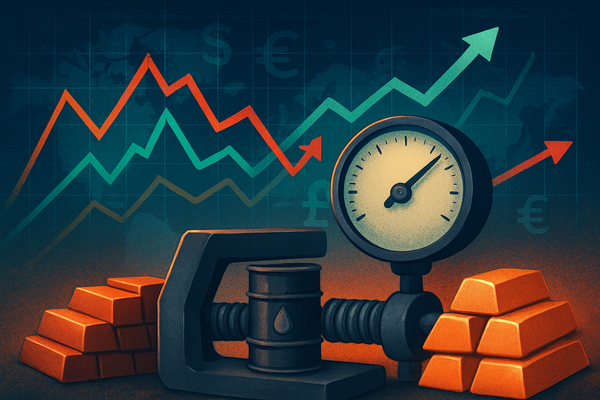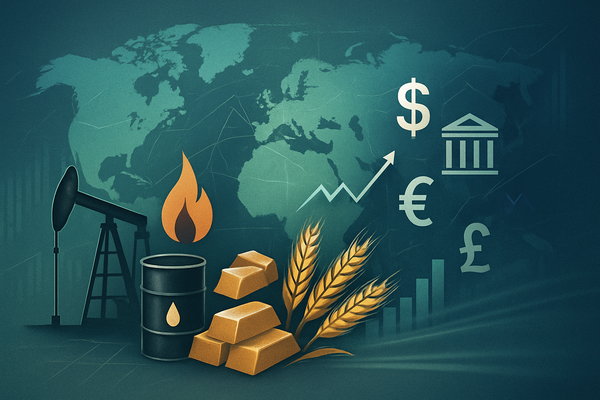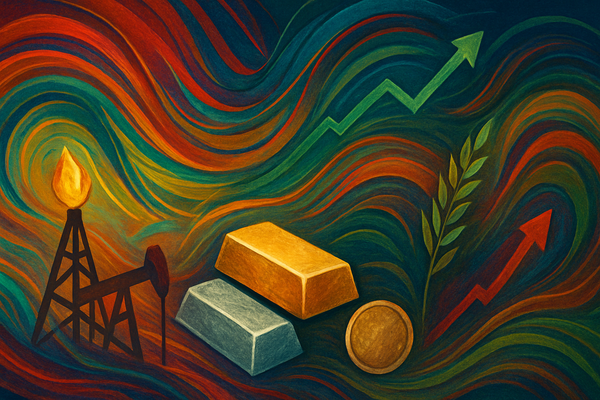Gold Teeters at $4,200 as December Looms: A Potential Roll-Over Towards Fresh Lows

The precious metals market is currently a focal point for investors, with gold prices pausing near the significant $4,200 mark. This crucial juncture is accompanied by forecasts suggesting a potential "roll-over" towards fresh lows in December 2025, signaling a period of heightened volatility and uncertainty for the yellow metal. Concurrently, silver, after an impressive surge that saw it test its October highs, has retreated, mirroring the cautious sentiment pervading the broader market.
These movements carry immediate and significant implications for financial markets, impacting investor sentiment, inflation hedging strategies, and expectations around global monetary policy. As central banks navigate complex economic landscapes, the performance of gold and silver will be closely watched as barometers of risk appetite and a potential hedge against ongoing economic uncertainties.
Precious Metals at a Crossroads: Gold's Standoff and Silver's Retreat
As of mid-November 2025, the gold market finds itself in a precarious position, battling the psychological and technical resistance level of $4,200 per ounce. Live spot prices have recently hovered between $4,050 and $4,079, following a brief surge above $4,200 that pushed it to a three-week high, only to see a subsequent pullback below $4,150. This current pause is interpreted by some analysts as a corrective bounce within a larger downtrend, suggesting that the recent advance might be temporary. A specific forecast indicates that if this is indeed a "B-wave bounce," gold prices could begin to "roll over soon," targeting fresh lows in December 2025, potentially testing support levels around $3,890 and $3,800. This scenario would follow a sharp sell-off from a recent record high, implying that the current upward momentum is unsustainable.
Conversely, some forecasts earlier in November 2025 had anticipated gold reaching $4,200 by year-end, driven by expectations of U.S. interest rate cuts. A sustained break above $4,220 could even open the door for a retest of all-time highs near $4,380. This divergence in expert opinion highlights the current uncertainty in the market. The timeline leading up to this moment has seen gold experience significant volatility, including a sharp sell-off from a recent record high, followed by this corrective bounce. Key players involved in these market dynamics include major institutional investors, central banks with their monetary policy decisions, and retail investors reacting to macroeconomic indicators and geopolitical events. Initial market reactions have been mixed, with some profit-taking observed after the recent surge, alongside continued safe-haven demand amidst global uncertainties.
Silver's journey has been equally dramatic. The white metal showcased remarkable volatility in 2025, reaching an all-time high of approximately $54.48 to $54.49 per troy ounce on October 17, 2025. This peak represented a significant breakthrough from a decade-long consolidation, with prices soaring 40-60% year-to-date by early October, decisively outpacing gold's gains. However, this record high was followed by a retreat, with the December silver futures contract dropping to a low of $45.51 per ounce in late October, a roughly 16% decline from its peak. This correction was partly attributed to the unwinding of "squeeze-driven positioning" and a broader adjustment in precious metals after gold's interim peak. Despite this pullback, silver managed to recover to around $48.69 by the end of October, maintaining a robust year-to-date gain of 68.46%, marking its strongest annual performance since 1979. More recently, silver has pulled back again after failing to hold above the $53.00 level, indicating continued price sensitivity.
The factors influencing these precious metal forecasts are multi-faceted. Expectations regarding Federal Reserve interest rate decisions play a crucial role; lower rates typically boost non-yielding assets like gold. However, a recent paring back of hopes for a December Fed rate cut, coupled with hawkish comments from Fed officials, has exerted downward pressure on precious metals. The inverse relationship with the U.S. dollar also remains a significant driver. Furthermore, global economic uncertainties, inflation concerns, and geopolitical tensions continue to bolster gold and silver's appeal as safe-haven assets. The "debasement trade," where investors seek hard assets to preserve purchasing power against systemic risks, also underpins demand.
Corporate Fortunes Tied to Precious Metal Swings
The volatile movements in gold and silver prices have a direct and significant impact on public companies operating within the precious metals sector. Companies involved in mining, refining, and investment funds are particularly exposed to these price fluctuations, which can lead to substantial gains or losses.
Mining companies, such as Barrick Gold Corp. (NYSE: GOLD) and Newmont Corporation (NYSE: NEM), are highly sensitive to gold price movements. A sustained "roll-over" towards fresh lows in December, as forecasted, would likely compress profit margins for these miners. Lower gold prices mean less revenue per ounce extracted, potentially leading to reduced profitability, delayed expansion projects, or even the closure of high-cost mines. Conversely, if gold manages to defy the bearish forecasts and retests its all-time highs, these companies would see a significant boost to their revenues and profitability. Similarly, silver miners like Pan American Silver Corp. (NASDAQ: PAAS) and First Majestic Silver Corp. (NYSE: AG) would face headwinds from a retreating silver price, especially after its recent peak. While silver's industrial demand offers some stability, a significant price drop would still impact their financial performance.
Conversely, companies that benefit from a declining gold price, such as those involved in industries that use gold as a raw material (though this is less common for investment-grade gold), or those whose business thrives in periods of economic stability where safe-haven demand diminishes, could see indirect benefits. Financial institutions that offer precious metal-backed investment products or leverage their portfolios with short positions on gold and silver could also stand to gain if the bearish forecasts materialize. However, the primary "winners" in a downturn are often those who have hedged effectively or are positioned to acquire assets at lower valuations. Investors in SPDR Gold Shares (NYSEARCA: GLD) or iShares Silver Trust (NYSEARCA: SLV) exchange-traded funds (ETFs) would experience direct impacts on their portfolio values, reflecting the underlying metal price movements. For these investment vehicles, a decline in prices would lead to a decrease in net asset value, affecting millions of retail and institutional investors.
The broader implications extend to companies providing services to the mining industry, such as equipment manufacturers and engineering firms. A downturn in precious metal prices could lead to reduced capital expenditure by mining companies, subsequently affecting their suppliers. Furthermore, the perceived stability of the global financial system can influence investor flows into precious metals. If a significant downturn in gold prices signals a return to perceived economic stability, it might divert investment away from safe-haven assets and towards riskier, growth-oriented equities, potentially benefiting a wider array of public companies in other sectors. The ability of these companies to manage their operational costs, hedge against price volatility, and strategically adapt to changing market conditions will determine their resilience and success in this evolving precious metals landscape.
Broader Significance: A Barometer of Global Economic Health and Policy Shifts
The current movements in gold and silver prices extend far beyond the immediate gains and losses of individual investors and companies; they serve as a critical barometer of broader industry trends, global economic health, and the efficacy of monetary policies. The potential roll-over of gold towards fresh lows in December, following its pause near $4,200, and silver's retreat after testing its October highs, fits into a larger narrative of market re-evaluation amidst evolving economic forecasts and central bank stances.
This event aligns with a broader industry trend where precious metals' roles as safe havens are continuously tested against the backdrop of fluctuating inflation expectations and interest rate outlooks. When hopes for U.S. interest rate cuts are pared back, or hawkish comments emerge from central bank officials, the opportunity cost of holding non-yielding assets like gold increases, leading to downward pressure. Conversely, persistent concerns over stagflation, government debt sustainability, and geopolitical risks continue to underpin a baseline demand for precious metals as a hedge against systemic instability. The "debasement trade," where investors seek hard assets to preserve purchasing power, remains a significant underlying force, suggesting that while short-term corrections may occur, the long-term appeal of precious metals persists in an environment of expansive monetary policies and fiscal deficits.
The ripple effects of these price movements can be felt across various sectors. For instance, a significant downturn in gold prices could signal a shift in investor confidence from safe havens to riskier assets, potentially benefiting equity markets and growth-oriented industries. Conversely, a sharp decline could also indicate heightened economic distress, prompting central banks to reconsider their monetary tightening paths. Regulatory or policy implications could arise if extreme volatility or market manipulation is perceived, though the current movements appear to be driven by fundamental economic factors and technical analysis. Historically, periods of significant gold price corrections have often coincided with shifts in global economic sentiment or major policy changes by central banks, such as the Federal Reserve. For example, during periods of aggressive interest rate hikes or strong economic growth, gold has historically struggled. Comparing the current situation to past cycles, such as the post-2008 financial crisis recovery or the early 2010s commodity boom and bust, provides valuable context for understanding the potential trajectory of the current market.
The dual nature of silver, as both a monetary metal and an industrial commodity, adds another layer of complexity. Its strong performance in 2025, driven by both safe-haven demand and robust industrial applications (especially in electronics and renewable energy), highlights its sensitivity to global economic growth alongside monetary policy. A retreat in silver prices, particularly if it signals a slowdown in industrial demand, could have ripple effects on industries reliant on silver as a key component, such as solar panel manufacturers and electric vehicle producers. Therefore, the current trends in gold and silver are not just about precious metals; they are a critical reflection of the intricate interplay between global economic forces, investor psychology, and the ever-evolving landscape of central bank policies.
What Comes Next: Navigating the Crossroads of Precious Metals
Looking ahead, the precious metals market stands at a critical juncture, with several short-term and long-term possibilities emerging from the current price dynamics. In the immediate future, all eyes will be on the $4,200 resistance level for gold. A decisive break above this point, sustained by strong buying interest and potentially dovish signals from central banks, could invalidate the bearish "roll-over" forecast and propel gold towards a retest of its all-time highs near $4,380. Conversely, a failure to breach $4,200, coupled with increasing selling pressure, would likely confirm the bearish outlook for December, pushing gold towards fresh lows around $3,890 to $3,800. For silver, the ability to recover and hold above the $53.00 level will be crucial for re-establishing bullish momentum, while a continued retreat could see it test lower support levels, potentially linked to broader economic slowdowns impacting industrial demand.
In the short term, market participants will be closely monitoring upcoming economic data releases, particularly inflation figures and employment reports from major economies, as these will heavily influence central bank decisions on interest rates. Any hawkish surprises from the Federal Reserve or other central banks could further weigh on precious metals, while a more dovish pivot could provide a much-needed catalyst for an upward move. Geopolitical developments, such as escalating conflicts or new trade tensions, will also play a significant role, as they tend to increase safe-haven demand for gold and silver. Potential strategic pivots for investors include adjusting portfolio allocations based on their conviction regarding the December forecast. Those anticipating a roll-over might consider reducing exposure or even taking short positions, while those who believe the current pause is temporary might use any dips as buying opportunities.
Over the long term, the trajectory of precious metals will continue to be shaped by fundamental macroeconomic forces. Persistent inflation, even if moderating, and concerns over the sustainability of government debt could continue to underpin the "debasement trade," driving long-term demand for gold and silver as stores of value. The ongoing energy transition and the increasing demand for silver in green technologies (solar panels, electric vehicles) will also provide structural support for silver prices, distinguishing its long-term outlook from gold to some extent. Market opportunities may emerge for strategic investors looking to acquire precious metal assets at potentially lower valuations if the December forecast materializes. Conversely, challenges include navigating increased market volatility and the risk of significant capital losses if forecasts prove incorrect.
Potential scenarios and outcomes range from a bullish resurgence, where gold and silver defy bearish predictions and embark on new rallies driven by renewed inflation fears or central bank dovishness, to a more prolonged bearish phase, where precious metals experience a significant correction as global economies stabilize and interest rates remain higher for longer. A middle-ground scenario could see choppy, range-bound trading as markets oscillate between inflation concerns and central bank hawkishness. Ultimately, the next few months will be pivotal in determining the near-term direction of gold and silver, with implications for investor strategies and the broader financial landscape.
Comprehensive Wrap-up: Navigating the Shifting Sands of Precious Metals
The current pause in gold prices near $4,200, coupled with forecasts of a potential roll-over towards fresh lows in December, marks a critical moment for the precious metals market. This juncture, alongside silver's retreat after testing its October highs, underscores the profound impact of evolving macroeconomic conditions, central bank policies, and investor sentiment on these traditional safe-haven assets. The immediate takeaway is one of heightened uncertainty and potential volatility, demanding careful consideration from all market participants.
Moving forward, the market's assessment of gold and silver will be largely dictated by the interplay of several key factors: the Federal Reserve's stance on interest rates, the trajectory of global inflation, the strength of the U.S. dollar, and geopolitical stability. A more hawkish Fed or a stronger dollar could reinforce the bearish outlook for gold, pushing it towards the forecasted December lows. Conversely, any signs of economic weakness or a dovish pivot from central banks could provide the necessary impetus for a rebound. Silver's dual role as both a monetary metal and an industrial commodity means its future performance will also be influenced by the health of global manufacturing and the pace of the green energy transition.
The lasting impact of these price movements could reshape investment strategies, potentially leading to a re-evaluation of precious metals' role in diversified portfolios. If gold does experience a significant correction, it might temper expectations for its immediate safe-haven appeal, prompting investors to explore other inflation hedges or risk-mitigation strategies. However, the underlying concerns about government debt and currency debasement are likely to ensure that precious metals retain their long-term appeal as a store of value.
Investors should closely watch for several indicators in the coming months. These include official statements from central banks, particularly the Federal Reserve, regarding their monetary policy outlook. Key economic data releases, such as the Consumer Price Index (CPI) and Producer Price Index (PPI), will offer insights into inflation trends. Additionally, any significant geopolitical developments or shifts in global trade relations could trigger sudden movements in precious metal prices. Ultimately, navigating the shifting sands of the precious metals market will require vigilance, adaptability, and a deep understanding of the complex forces at play.
This content is intended for informational purposes only and is not financial advice



